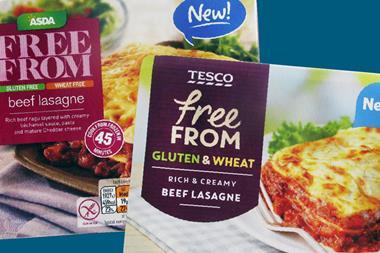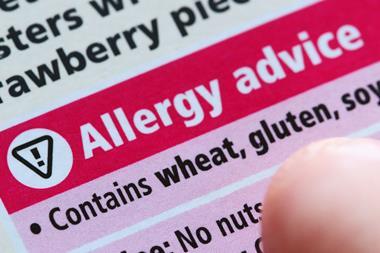
Allergy labelling is controversial stuff. Retailers and suppliers have received flak for putting excessive ‘may contain’ labels on products; and, just a few weeks ago, supermarkets were accused of charging overinflated prices for own-label products labelled as ‘gluten free’.
The added cost and due diligence involved in producing safe ‘free from’ products means this is a far more nuanced issue than tabloid headlines suggest. But it’s also clear there is plenty of scope for confusion.
A new initiative is now trying to make this area easier to navigate for retailers, suppliers and consumers alike. The Institute of Food Safety, Integrity & Protection (TIFSIP) has set up a working group on allergy labelling, with a view to creating a voluntary template for allergy labels by the end of 2016.
So what is TIFSIP proposing, and what are the chances of this new system being adopted?
TIFSIP’s work is focused on precautionary labels – ‘may contain’ warnings intended to alert consumers to the possibility of accidental contamination. It wants to come up with consistent wording and usage guidelines that can be used across Europe to create some much-needed consistency for allergy sufferers: right now, there are about 50 different versions of ‘may contain’ labels in use, TIFSIP’s research suggests.
“It’s an absolute mess,” says TIFSIP head Jenny Morris. “There are lots of ways of putting ‘may contain’, all of which should mean the same thing – but evidence suggests the way it’s written makes a different impact on the consumer.”
One of the main principles TIFSIP wants to embed in its guidelines is for ‘may contain’ labels to be used only in conjunction with risk assessments. This should ensure allergy warnings are only present on products where there is a genuine risk of contamination, not a way for manufacturers or retailers to cover their backs against potential legal action.
TIFSIP is also exploring if labels should communicate the likely level of contamination, as this could make it easier for allergy sufferers to make informed decisions about whether they are willing to take the risk of consuming a product labelled ‘may contain’.
However, campaigners have expressed concern about this.Individual sufferers’ tolerance can vary depending on their physical state: a person may be more susceptible to an allergic reaction when drunk or immediately after strenuous exercise.
This means even a specific level of possible contamination expressed on a label would be only a rough guideline to an allergic shopper.
“There is still a lot more work that needs to be done – and then the most important thing will be to communicate so that consumers understand,” says Lynne Regent, CEO of the Anaphylaxis Campaign. She warns sufferers are “very nervous” of thresholds and often believe they are “the most allergic person in the world”.
As for likely support from industry for TIFSIP’s work, much will come down to the cost implications of the risk assessments it proposes. However, initial feedback has been encouraging.
Precautionary labelling “should only be used where there is a real and demonstrable risk of cross-contamination of an allergen” says the FDF, adding it is “keen to improve allergen information and management within the whole food chain.”
Lucinda Bruce-Gardyne, founder of Genius Gluten Free, adds: “Standardised labelling could help eliminate confusion, and ensure consumers are able to make informed decisions.”
Food safety expert Dr Lisa Ackerley, a member of the TIFSIP working group, is also optimistic the initiative will succeed, particularly in the UK. “We might as well get our house in order – and I think most suppliers want to. They genuinely want to be helpful.”



















No comments yet